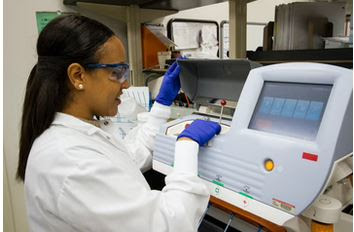Can Chemical-Resistant Caulk Adhere To A Variety Of Surfaces, Or Are There Specific Surface Types It Works Best With?
Caulk, a versatile material used for sealing and waterproofing, comes in various formulations to cater to different applications. Among them, chemical-resistant caulk stands out as a remarkable solution for environments where exposure to harsh chemicals is a concern. But can chemical-resistant caulk adhere to a wide range of surfaces, or are there specific surface types it works best with? In this blog, we'll explore the characteristics of chemical-resistant caulk and its compatibility with different surfaces.
Understanding Chemical-Resistant Caulk
Chemical-resistant caulk is a specialized sealant formulated to withstand exposure to a variety of chemicals, solvents, acids, and other harsh substances without losing their integrity. Its unique composition and additives make it highly durable and suitable for applications in industries such as laboratories, chemical plants, factories, and areas where chemical spills are a possibility.
Adhesion Capabilities of Chemical-Resistant Caulk
One of the significant advantages of chemical-resistant caulk is its ability to adhere to a wide range of surfaces. This exceptional property makes it a valuable asset in challenging environments where traditional caulk may fail to provide adequate protection.
1. Metals
Chemical-resistant caulk adheres exceptionally well to metal surfaces, including stainless steel, aluminum, and galvanized steel. It forms a reliable bond, preventing corrosive chemicals from seeping into joints and causing damage.
2. Ceramics and Porcelain
Chemical-resistant caulk can effectively adhere to ceramic and porcelain surfaces, making it suitable for sealing sinks, bathtubs, and other sanitary fixtures in laboratory and industrial settings.
3. Plastics
Whether it's polyvinyl chloride (PVC), polyethylene, or other plastic materials, chemical-resistant caulk maintains a strong bond with these surfaces, ensuring a tight seal in various applications.
4. Concrete and Masonry: When sealing joints in concrete or masonry structures that may come in contact with chemicals, chemical-resistant caulk is a reliable choice. It adheres securely to porous surfaces, minimizing the risk of chemical intrusion.
5. Glass
Chemical-resistant caulk is also capable of adhering to glass surfaces, making it suitable for applications where chemical exposure is a concern, such as chemical laboratories and industrial glassware.
Surface Preparation Matters
While chemical-resistant caulk boasts excellent adhesion properties, proper surface preparation is still essential to ensure optimal bonding. Before applying the caulk, the surface must be clean, dry, and free from dust, debris, grease, or any other contaminants. Roughening smooth surfaces slightly can improve adhesion, especially for non-porous materials like glass and metals.
Limitations and Considerations
Despite its impressive adhesive capabilities, there are some
Surface types where chemical-resistant caulk may not be the best choice
Wood
Chemical-resistant caulk may not adhere as well to natural wood surfaces due to their porous nature and potential for movement. In such cases, a high-quality silicone caulk or polyurethane-based sealant might be more suitable.
Rubber
Some rubber surfaces may not provide the ideal conditions for chemical-resistant caulk to form a reliable bond. Silicone-based sealants are generally more compatible with rubber materials.

Enhanced Protection against Chemical
Exposure
One of the primary reasons for choosing chemical-resistant caulk is its ability to provide enhanced protection against chemical exposure. In environments where corrosive substances, acids, and solvents are present, regular caulk may quickly degrade, leading to leaks and compromised seals. Chemical-resistant caulk, however, remains intact and ensures a durable barrier against chemical penetration, safeguarding structures, equipment, and surfaces from potential damage.
Preventing Contamination and Cross-Contamination
In industries such as pharmaceuticals, food processing, and biotechnology, maintaining a sterile and contamination-free environment is paramount. Chemical-resistant caulk plays a vital role in sealing joints and gaps, preventing the ingress of harmful chemicals, bacteria, and other microorganisms that could contaminate sensitive processes or products. This reduces the risk of cross-contamination and ensures compliance with strict industry regulations.
Chemical-resistant caulk not only excels in harsh chemical environments but also offers superior resistance to extreme environmental conditions. It can withstand fluctuations in temperature, humidity, and exposure to UV radiation without compromising its sealing properties. This versatility makes it suitable for outdoor applications and industries where
Reducing Health and Safety Risks: Using chemical-resistant caulk in environments where chemical spills, or leaks are possible can significantly reduce health and safety risks for workers. The caulk's ability to create a reliable barrier against chemical penetration protects personnel from direct contact with hazardous substances, contributing to a safer work environment.
Conclusion
Chemical-resistant caulk is a valuable asset for applications where exposure to harsh chemicals is a concern. Its exceptional adhesive capabilities allow it to bond effectively with various surfaces, including metals, ceramics, plastics, concrete, and glass. Proper surface preparation remains crucial for ensuring a strong and long-lasting bond. However, for specific surface types like wood and rubber, other sealant options may be more suitable. When selecting chemical-resistant caulk for a project, it is essential to consider the compatibility with the intended surface and the severity of chemical exposure to ensure optimal performance and protection.



Comments
Post a Comment